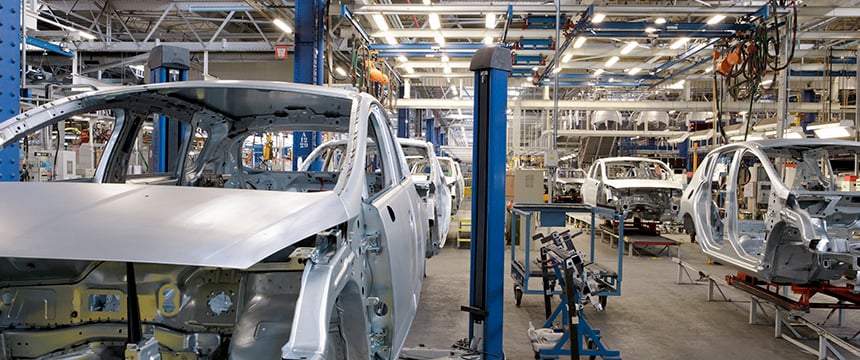USMCA's Panel on Automotive Rules of Origin and What It Could Mean to Manufacturers in the Region

As covered by the news, Mexico and Canada have joined forces to challenge the United States’ strict interpretation of some of the United States-Mexico-Canada Agreement´s (USMCA or Agreement) Automotive Rules of Origin (ROO). A USMCA dispute panel is expected to reach a decision regarding the proper interpretation around September 2022. The key issue in dispute is how to calculate the USMCA 75% Regional Value Content (RVC) for passenger vehicles, lights trucks, and certain auto parts made in North America to qualify for duty-free treatment.
Even in a region as interconnected as North America, it is difficult to manufacture complex goods, such as an automobile, without component inputs from other countries. USMCA´s ROO identify three different types of auto parts (core, principal, and complementary) with varying requirements for them to be considered as originating. Core parts (engine, chassis and body, axles, transmission, suspension system, steering, and advanced batteries) must have a 75% RVC and, as long as this percentage is met, 100% of such core parts automatically qualify as having USMCA origination.
The ROO interpretation discrepancy relates to how the RVC is calculated for a motor vehicle´s core parts that are produced in the Agreement´s territory, and how such RVC in turn impacts a vehicle´s RVC that will be exported within the region.
As allowed by the USMCA, the United States has granted longer transition periods for auto manufacturers to comply with the Agreement´s RVC requirements. Longer transition periods are granted through “Alternative Staging Regime” (ASR) approval letters. These state that for purposes of a vehicle´s RVC calculation, otherwise non-originating components should not count as originating simply because such components were used as part of the calculation for the core parts to qualify as USMCA originating.1
Based on the ASR´s terms above, the U.S. interprets that if a core part is exported for use in a vehicle within the region, any percentage that is not USMCA originating while producing said core part (say, the permitted non-originating 25% of the previous paragraphs), should not count towards a vehicle´s RVC calculation. The U.S. adheres to this interpretation even where the non-originating components were used within the USMCA authorized calculation for the core parts to fulfill the relevant ROO.
Mexico and Canada’s interpretation favors more flexibility. Mexico and Canada contend that the aforementioned U.S. interpretation violates several USMCA provisions, most importantly:
- In general, goods produced in the territory of an Agreement Party using non-originating materials, provided that they satisfy the relevant product-specific ROO, qualify as originating.
- In particular, that a core part (except for an advanced battery) is considered of territorial origin as long as it satisfies the 75% RVC requirement.
- The U.S. interpretation goes against the USMCA´s mandate that the calculation of the RVC of a good (an automobile) “shall not” consider the value of non-originating materials that are used to manufacture products that do qualify as originating (core parts) and which are subsequently used in the production of the final product (an automobile).2
If the panel affirms the U.S. interpretation, even if a manufacturer complies with the relevant ROO and observes all of its additional obligations, said producer still may not contribute with a 100% of its qualifying manufacturing to the region’s automotive production. This could create the incentive for parts to be source abroad – even if there are import duties –, as cheaper imports may be more attractive than costlier wholly originating components that do not fully contribute to motor vehicle´s regional content.
Even though Mexico and Canada´s case deals with the ROO for automotive goods, there is nothing to signal that this could not become the U.S. systemic approach to the Agreement´s RVC calculations for all manufactured goods.
It is particularly worrisome that in Mexico´s sample of the ASR approval letters, the U.S. Trade Representative´s understanding is that the manner to calculate RVC is to be consistent with USMCA´s text, the Uniform Regulations “and [the] direction from USTR and U.S. Customs and Border Protection.”3
1 Mexico´s Courtesy Translation of its January 6, 2022 request for the establishment of a USMCA panel, description of an Alternative Staging Regime approval letter to an automobile manufacturer, para. 8.
2 Respectively, USMCA´s Chapter 4, article 4.2(b); Appendix to Annex 4-B, articles 3.2 and 3.7; and Chapter 4, article 4.5.4.
3 Mexico´s Courtesy Translation of its January 6, 2022 request for the establishment of a USMCA panel, para. 8.

